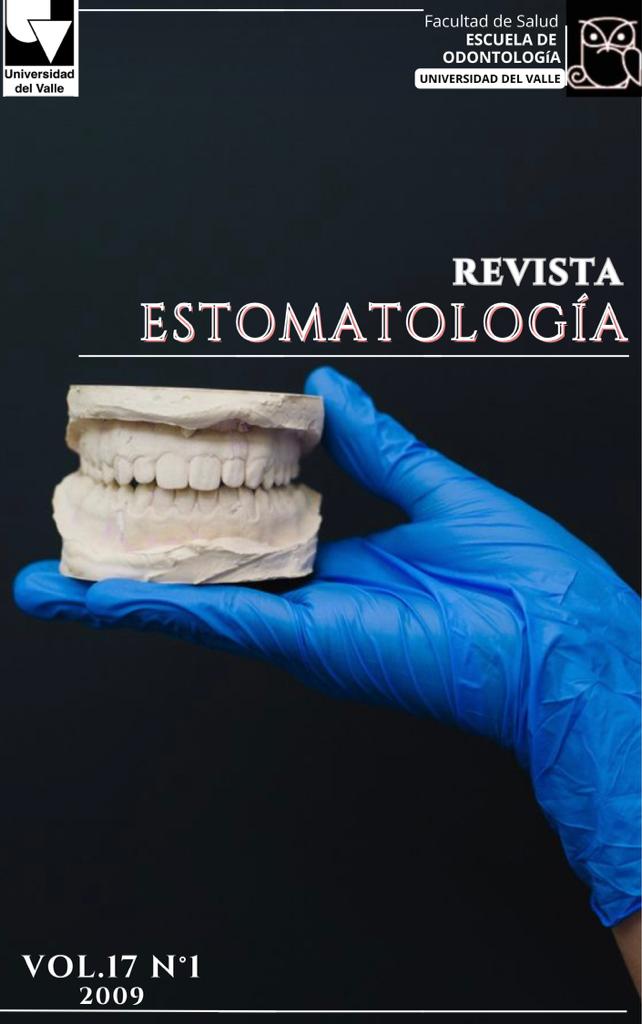Assessment of the skeletal maturation through hand wrist radiographies in Afro-Colombian children, from Puerto Tejada, Cauca, 2007
Main Article Content
Summary: Introduction: The aim of this study was to determine
the skeletal age measurement (stages of skeletal maturity) of African continental ancestry (Afro
Colombians) in boys and girls from 8 to 14 years of Puerto Tejada, Cauca. Material and Methods: this
cross-sectional study examined X-rays of both hands and wrists obtained from 80 boys and girls using
Björks analysis to evaluate the stage of skeletal maturity. Results: 50% of participants were male
gender. 57% of the sample was found with late mixed dentition. According to stage of osseous
maturity, 36.7% of subjects were classified in PP2 (equal width of diaphysis and epiphyses of the
proximal phalanx of index finger); 18.2% in MP3 (diaphysis and epiphyses with the same width of the
second half phalanx of finger). The more maturity stage reached by boys was MP3cap while girls
showed the highest stage of development Ru, which is complete growth. Conclusions: There are
differences in the level of maturation according to the gender and race, observing that the Afro
Colombian girls mature faster than boys. These differences must be considered during diagnosis and
treatment planning in maxillary orthopedic, orthodontics and general medicine. Key words: Age
determination by skeleton. Growth and development. African continental ancestry group,
hand-radiography. Wrist radiography.
Downloads
Los autores/as conservan los derechos de autor y ceden a la revista el derecho de la primera publicación, con el trabajo registrado con la licencia de atribución de Creative Commons, que permite a terceros utilizar lo publicado siempre que mencionen la autoría del trabajo y a la primera publicación en esta revista.





